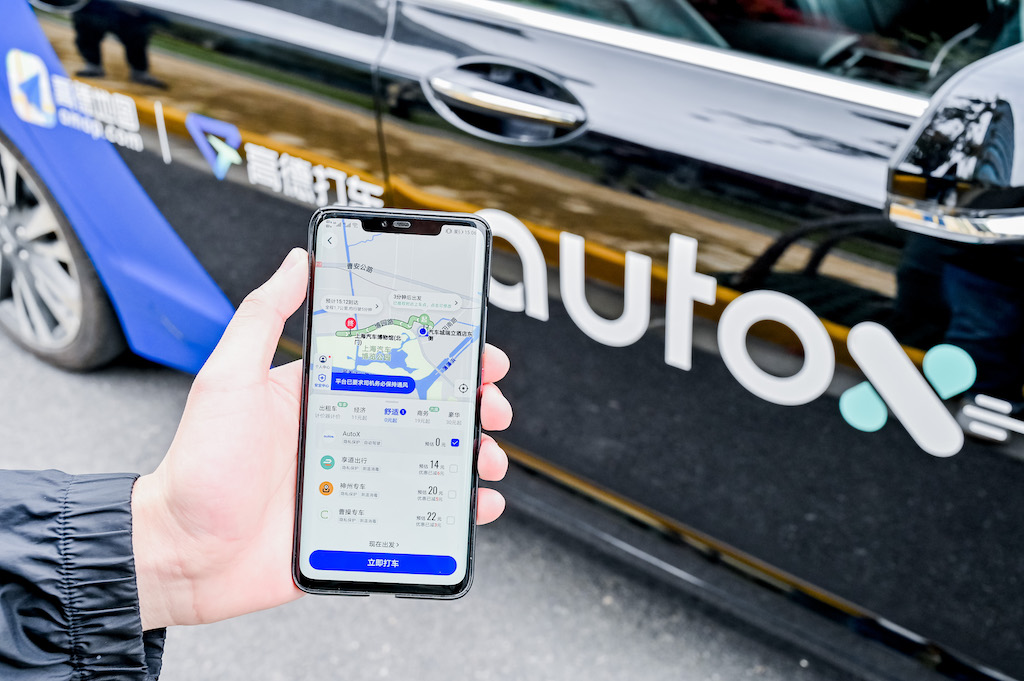Fully driverless robotaxis are now open for public rides in the streets of Shenzen – a maiden move in China by AutoX, a four-year-old startup backed by Alibaba, MediaTek, and Shanghai Motors.
The success of going fully driverless is possible with the “5th generation” autonomous driving system that includes a pair of LiDAR sensors on the sides, “4D” radar sensors, and thorough blind spot sensing, according to the company. The robotaxis can react to even the smaller objects around them.
Before it was made available to the public, AutoX touted a battle-tested platform that knows how to navigate everything from illegally-parked cars through to unprotected U-turns. The company’s vehicle has been in testing in other places, including California, but a “much larger number of road users” in China helped it rapidly refine its technology.
China’s first completely empty cab
Although the program is billed as open to the public, the AutoX program begins with a limited pilot similar to North American firm Waymo’s rollout of driverless robotaxis in the United States. Riders must pre-register online and AutoX selects which registrants are invited to ride in the company’s driverless vehicles.

Riders can sign up for a pilot program in Shenzhen using membership credits, then they can hop in a modified Chrysler Pacifica to travel across town with zero human contact. Source: AutoX
Like Waymo, the base vehicle for the AutoX service is the Chrysler Pacifica minivan. The selection of an American automotive manufacturer for this initial program is despite AutoX having partnerships with many Chinese manufacturers, including Dongfeng Motors, Shanghai Auto, BYD, and Chery Automobile.
Over the past six months, the company said driverless “stress tests” to see how the vehicle performs in various road situations were conducted. The firm’s COO Jewel Li told CNBC that more than 100 robotaxis were tested by employees and private guests, such as media, business partners, investors, and auto-makers, across Chinese cities, with 25 fully autonomous vehicles in Shenzhen.
Although it is not exactly China’s first attempt, the multiple so-called robotaxi projects that have been launched in Chinese cities are limited in the sense that these vehicles still have a driver who can take over in emergencies or someone who can operate the car remotely.
AutoX also has a plan in the next six months to expand to 10 cities globally. The firm plans for Southeast Asia to be on its list, without specifically stating which city in the region. CEO Jianxiong Xiao emphasized that AutoX has an advantage in Southeast Asia compared to other autonomous driving systems developed and tested in the West because streets in Asia are more similar to those in Chinese cities.
Impact on businesses in China
Like any country, self-driving cars could steer China’s automotive industry into the passing lane. From driverless taxis to automated cargo trucks, autonomous vehicles (AVs) will change the nature of on-road driving and, in the process, revolutionize the automotive and mobility industries.
A report by McKinsey suggests that within this mix of opportunity and uncertainty, AV players (from components vendors to mobility service providers) could earn trillions in revenue across China.
“Automakers might vertically integrate into services and software development (as leading players are already doing today). Players in these sectors must reconcile their differences in product life cycles (for example, three to four years for automotive, weeks to months for software) and business models (for instance, products versus services) to compete and cooperate effectively with each other,” the report outlined.
The larger point is that autonomous vehicles could create substantial value for the industry and thus have a major impact on profit pools. Inevitably, the competition will stiffen with considering in the first four months of 2020 alone, 10 Chinese autonomous driving companies secured new funding, according to Iyiou.com.
In fact, companies are now ramping up road tests. In early last year, WeRide.com, one of AutoX’s main competitors, said that its robotaxi fleet had now grown to 100 vehicles in operation in Guangzhou. Tech giant Baidu in April formally launched a robotaxi service in Changsha, as part of its Apollo program.
Source: techwireasia









